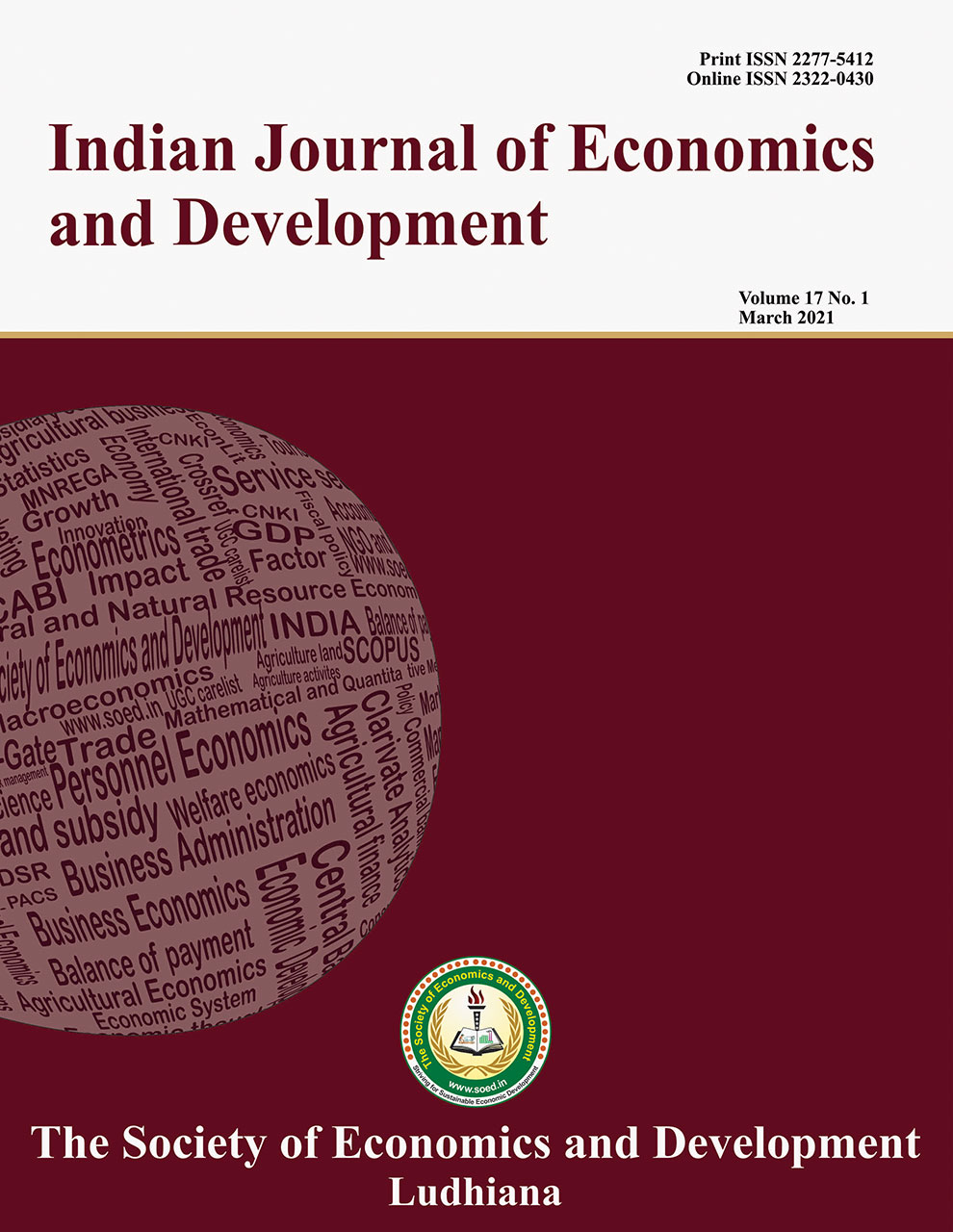Distribution and Determinants of Fallow Land among Farmers of Central Dry Zone of Karnataka

Price: ₹ 1000
Author: Afrin Zainab Bi1, and P.S. Srikantha Murthy2
Author Address: 1Ph.D. Scholar, and 2Professor, Department of Agricultural Economics, UAS, GKVK, Bengaluru-560065 (Karnataka)
Keywords: Central dry zone, family labour, irrigation, land fallow, Tobit.
JEL Codes: C24, D22, Q15, Q24.
Abstract
Farmers in dry regions of India have a high tendency for leaving their land fallow. To decipher this phenomenon, the study was carried out in the Tumkur district of the central dry zone of Karnataka. Results from the study revealed a positive relationship between the size of land holdings and land fallow. The major reason stated by farmers for leaving their fallow land was the scarcity of rainfall or irrigation, and poor land fertility status. The Tobit regression model was fitted to study the determinants of the decision of farmers to keep the arable land fallow, where, dependent variable considered was the share of fallow land in the total size of landholding of farm households. It was found that the availability of water for irrigation and family labour has a negative relationship with fallow land. Other factors determining the extent of fallow land were the distance of land from residences, poor land fertility status and availability of credit.
Description
Indian Journal of Economics and Development
Volume 16 No. SS, 2020, 390-395
DOI: https://doi.org/10.35716/ijed/NS20-077
Indexed in Clarivate Analytics (ESCI) of WoS
Afrin Zainab Bi1, and P.S. Srikantha Murthy2
1Ph.D. Scholar, and 2Professor, Department of Agricultural Economics, UAS, GKVK, Bengaluru-560065 (Karnataka)
Corresponding author’s email: afrinzainab22@gmail.com



